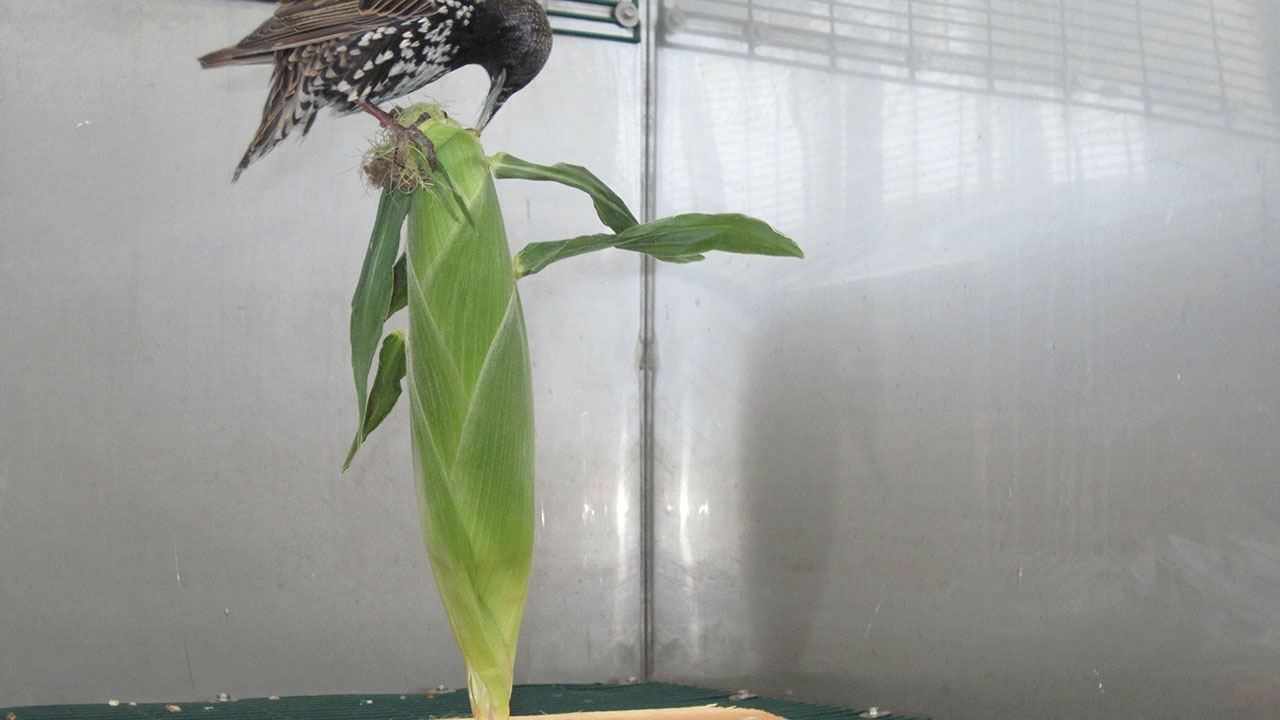NWRC Research Areas: Repellent Research

Our scientists are evaluating and developing wildlife repellents and repellent application strategies to help protect plant and animal agriculture.
The NWRC Repellents Research Project is focused to develop information and methods relevant to the wildlife damage management and the human-wildlife conflicts associated with U.S. plant and animal agriculture. By its very nature, wildlife is a highly dynamic and mobile resource that can cause damage to agricultural and industrial resources, pose risks to human health and safety, and affect other natural resources. As part of human-wildlife interactions in the United States of America, the negative impacts of wildlife to plant and animal agriculture include direct losses to crop production through wildlife consumption of newly-planted, maturing and ripening crops; direct losses associated with wildlife consumption of dairy and feedlot rations; indirect losses from fecal contamination, shattering or lodging of plants prior to harvest; and indirect losses associated with the transfer of pathogens in water troughs, feeders and concentrated animal feeding operations.
Within the United States, wild birds associated with human-wildlife conflicts include red-winged blackbirds, brown-headed cowbirds, common grackles, yellow-headed blackbirds, great-tailed grackles and boat-tailed grackles (i.e. blackbirds); Canada geese (e.g. emergent and maturing soybean damages); American crows (e.g. almonds); house finches, Lewis’ woodpeckers, pinyon jays, European starlings and American robins (i.e. fruit damage); horned larks (emergent lettuce seedlings); woodpeckers (property and utilities); ring-necked pheasants (emergent sunflower seedlings); European starlings (e.g. corn) and wild turkeys (e.g. ginseng). Red-winged blackbirds, rock pigeons, house sparrows and American crows have also been implicated in human-wildlife conflicts at concentrated animal feeding operations (CAFOs). With regard to negative impacts of wild birds to animal agriculture, the primary avian pest throughout the United States is the European starling (i.e. invasive species). In 2000, starling damage to U.S. agriculture was estimated at $800 million, annually. NWRC scientists modeled the economic interactions of birds and livestock at commercial dairies; bird consumption of dairy rations costs Pennsylvania dairies between $4.11–12.08 million (mean $10.6 million) in total economic damage, with approximately 43 to 128 jobs (mean 112) forgone statewide in 2009. In addition to crop damage and consumption of livestock feed, wild birds can be infected by and carry a large number of pathogens that are a health risk to both humans and livestock.
Research needed for the mitigation of wildlife depredation of agricultural crops includes the development of damage management strategies and novel applications of current technology to existing human-wildlife conflicts. Our current approach includes the development of repellent application strategies, the evaluation and development of existing and novel avicides, and the evaluation of candidate repellents and novel repellent formulations. The NWRC Repellents Project will evaluate the efficacy of anthraquinone-based repellents and novel repellent formulations for the protection of ripening rice and emergent soybean seedlings. Research needed for the mitigation of avian pests to animal agriculture includes the development of intervention strategies for dairies and feedlots associated with direct and indirect losses to their milk and beef production. Our current approach includes production modeling and economic modeling of the nutritional depletion of cattle feed by European starlings and red-winged blackbirds. The NWRC Repellents Research Project is focused to develop information and methods relevant to the wildlife damage management and the human-wildlife conflicts associated with U.S. plant and animal agriculture.
Repellent Research
Scott J. Werner, Project Leader
Email: Scott.J.Werner@usda.gov
Phone: 970-266-6136
4101 LaPorte Ave.
Fort Collins, CO 80521
Allison Kohler, Research Wildlife Biologist

